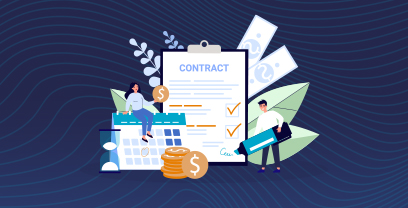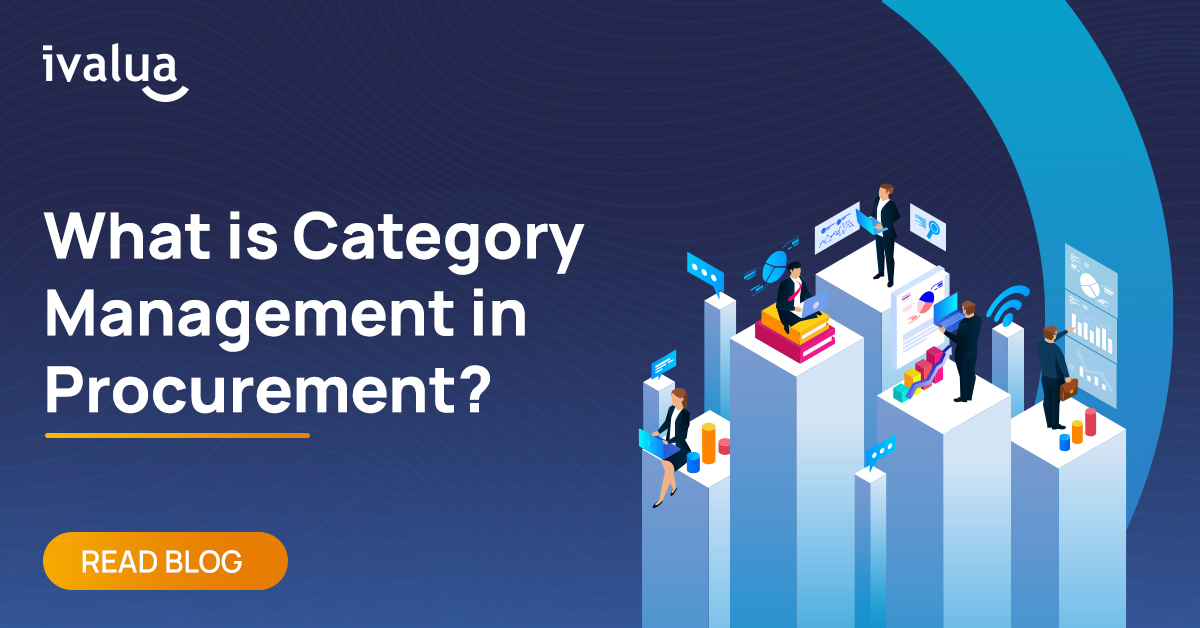Contracts are the cornerstone of procurement. They govern every supplier relationship, and help to enforce the obligations between buyers and suppliers.
Despite the critical role of contracts, contract management often takes a backseat to other procurement processes – and that can have severe consequences. Organizations may miss out on savings opportunities or find themselves in disputes with suppliers. To maximize value and mitigate risk, effective vendor contract management is essential.
In this article, we’ll explore why contract management matters in procurement, how it drives efficiency, ensures compliance, and strengthens supplier relationships. We’ll also highlight the pitfalls of inefficient processes and provide strategies to overcome common challenges with effective Contract Lifecycle Management (CLM) software.
The Cross-Functional Role of Contract Management
Effective contract management strengthens partnerships with suppliers by fostering accountability, transparency, and collaboration and touches numerous areas across an organization:
- Procurement: Ensures contracts align with strategic sourcing goals and category strategy, including cost efficiency, quality standards, and delivery timelines. Often involved in vendor onboarding, SLA and obligation tracking.
- Legal: Supports compliance with laws and regulations, mitigating risks through clearly defined terms and conditions.
- Supporting Stakeholders (Human Resources, IT, etc.): Responsible for subject matter review of key contract clauses and elements, facilitates vendor / external workforce onboarding, involved in the execution and monitoring of obligations, and more.
Inefficient vendor contract management can result in missed renewal deadlines and overspending, legal disputes, and regulatory penalties. Fragmented processes and disorganized records can slow procurement cycles, and mismanaged contracts can damage trust and collaboration with suppliers. Ultimately, these inefficiencies negatively impact a company’s bottom line.
Seventy-nine percent (79%) of procurement professionals surveyed say the ability to find and search for contracts is a primary reason to digitize contract management, closely followed by improving operational performance (60%), improving regulatory and legal compliance (60%), and reducing cycle times (55%). Other key goals include creating audit trails, lowering operating expenses and reducing value erosion.
In short, adopting a streamlined, digital approach to contract management is key to optimizing procurement strategies and driving business success.
Now that we’ve explained why contract management is so important to procurement success, let’s examine the contract management lifecycle and its six stages in detail.
6 Stages of The Contract Management Lifecycle
To illustrate the six stages of the contract management lifecycle, we’ll use a fictitious company, CloudTech Solutions, as an example.
Let’s say CloudTech is a growing technology company that needs a new vendor to provide cloud infrastructure services. Its contract management lifecycle provides a structured approach to ensure success at every stage:
1) Contract Request and Initiation
CloudTech Solutions identifies the need for a robust cloud infrastructure provider to support its growing digital operations. In the context of a procurement contract, the procurement team formally initiates the contract process, outlining objectives such as improved server uptime, enhanced data security, and a defined budget of $500,000 annually. Internal stakeholders – IT, legal, and finance – align their priorities to ensure the contract meets their operational needs and compliance requirements. CloudTech may also leverage an Intake Management solution to orchestrate the review and approval workflow across legal and supporting stakeholders.
2) Contract Creation and Authoring
CloudTech’s procurement team drafts the contract using standardized templates and pre-approved clause libraries to ensure accuracy and consistency. The contract includes key details such as:
- Scope of Services: 99.9% server uptime and Tier 1 customer support
- Service Level Agreements (SLAs): Downtime penalties, response times, and compliance standards
- Pricing: Monthly billing, with penalties for missed SLAs
Automation tools speed up the drafting process while reducing the risk of missing critical terms. A precise and well-structured contract ensures both CloudTech and the vendor clearly understand their obligations and deliverables.
3) Contract Review and Negotiation
The draft contract is shared with the selected vendor for review. The vendor may request adjustments, such as changes to the termination clause or modified SLAs. CloudTech’s legal and procurement teams carefully analyze the changes to ensure they align with risk tolerance and company objectives.
Both parties may use contract management software to track revisions and maintain a clear audit trail of changes. Once contract negotiations are complete, the contract is final.
4) Contract Performance and Analytics
Now the vendor begins providing cloud infrastructure services to CloudTech, and CloudTech’s procurement team closely monitors performance against the agreed SLAs using analytics tools integrated into the contract management system.
If performance deviates or if there’s unexpected downtime, relevant team members are notified with an alert. This proactive monitoring keeps the vendor accountable and ensures the contract delivers its intended value.
5) Contract and Agreement Management
Management is ongoing. Say there’s a potential SLA breach when the vendor’s response time dips below agreed-upon levels. CloudTech’s procurement team can examine real-time data using dashboards and analytics from the contract management system to identify the issue early and initiate discussions with the vendor to resolve the problem.
With a contract management solution in place, both parties have secure, centralized access to the latest contract, which enables them to take action quickly and make necessary adjustments. This systematic approach prevents misunderstandings and promotes a positive, productive vendor relationship, and protects the value of the contract that CloudTech expected to realize.
6) Contract Expiry/Renewal
Before the vendor contract expires, CloudTech receives an automated alert to evaluate the vendor’s performance. At this time, the procurement team assesses key metrics such as supplier performance, SLA performance, and cost efficiency to determine whether to renew the contract or look for a new provider.
CloudTech can renegotiate terms at this time to reflect new business goals, or, if switching vendors, leverage pre-established handover procedures to ensure a seamless transition. updated SLAs and pricing to reflect new business goals. By leveraging automation and data analytics, CloudTech can avoid any lapse in cloud infrastructure services.
The six stages of the contract management lifecycle provide a structured framework that helps organizations like CloudTech manage contracts effectively. Remember: A well-executed contract management strategy doesn’t just minimize risk; it drives efficiency, reduces costs, and supports long-term growth.
However, even with a sound contract management process in place, challenges exist. Next, we’ll examine those challenges and how to overcome them.
Tackling the Challenges of Contract Management
Managing contracts effectively requires overcoming several daunting challenges. Here’s a closer look at the biggest ones, and how to solve them.
Manual Contract Requests
Organizations often rely on email or other manual methods to collect and manage contract and legal requests. This means that requesters and those supporting the request likely have limited transparency into status (the dreaded “black box”), and no centralized tools to collaborate. Oftentimes, this lack of collaboration creates friction in the process as additional information is needed to ensure the requested contract or legal help is provided.
Solution: A central Intake Management hub, powered by GenAI, can provide an effortless, user-friendly experience for employees to request contracts and legal assistance. These solutions provide a guided, conversational experience, complete visibility, collaboration and extensibility to improve the overall experience, service levels, and ensure employee satisfaction and efficiency.
Inefficient Contract Authoring that Lack Collaboration
Organizations often rely on MS Word and email to draft contracts and collaborate. This approach creates opportunities for version issues, non-standard or approved language, mistakes, and silos of information where some stakeholders may lack visibility.
Solution: Modern CLM solutions enable contract authoring through automated workflows that include stakeholders and suppliers, so agreement can be reached rapidly, and contracts are executed in a timely manner. Collaborative authoring includes messaging capabilities, redlining and change-tracking, including via AI/GenAI capabilities, and automated workflows, to ensure smooth and transparent negotiation, review, and approval processes right in one central solution. These solutions also enable quick templates and master clauses to be leveraged for faster cycle times and increased compliance.
Disorganized Contract Storage and Retrieval
Contracts scattered across email inboxes, shared drives, and physical files can lead to inefficiencies and lost documents. Teams waste time searching for relevant agreements, which can delay decision-making and increase the risk of overlooking key terms.
Solution: A centralized, cloud-based digital contract repository provides secure, searchable storage and enables teams to quickly search for and access agreements, clauses and metadata, monitor versions, and ensure that the latest documents are readily available to all stakeholders. The solution should also provide AI/GenAI technology to digitize contract documents and extract metadata, such as obligations, key terms, and clauses.
Lack of Real-Time Obligation Tracking and Monitoring
Without real-time tracking, teams struggle to monitor contract performance, compliance, and deadlines. This lack of visibility can result in missed milestones, penalties for non-compliance, or failure to enforce favorable terms.
Solution: Use contract management software with built-in dashboards and AI-powered analytics that enable you to track the lifecycle of obligations, KPIs like delivery schedules, and SLAs. Automated alerts help keep contracts on-track.
Non-Compliance With Contract Terms and Conditions
Failure to enforce contract terms can lead to financial losses, legal disputes, and damaged supplier relationships.
Solution: Regular audits help to ensure compliance, and AI-powered tools can flag potential risks, track adherence to SLAs, and provide actionable insights.
Difficulty Managing Contract Renewals and Expirations
Manual processes or outdated systems can lead to unintentional lapses in agreements or missed opportunities for renegotiation.
Solution: Automate renewal notifications with contract lifecycle management software to receive reminders well in advance of key dates. This ensures sufficient time to evaluate vendor performance, renegotiate terms, or prepare for transitions to new providers.
Manual Errors and Inefficiencies
Relying on manual data entry and processes increases the likelihood of contract errors, which can lead to costly misunderstandings and non-compliance.
Solution: Automate contract creation and approval workflows, using pre-approved templates, and clause libraries, to reduce the risk of errors and speed up the contract lifecycle.
Contract Disputes from Clause Interpretation
Ambiguities in contract language or misinterpretation of clauses can lead to conflicts, delay projects, and damage business relationships.
Solution: Involve legal teams early in the contract drafting process to ensure clarity and precision in language. Use standardized templates and digital CLM software with natural language processing (NLP) capabilities to suggest improvements.
In the next section, we’ll provide some critical questions that will help you assess your CLM maturity level and identify any gaps that need addressing.
How to Assess Your Contract Management Automation Maturity
When assessing your contract lifecycle management maturity level, it’s important to examine your overall goals, process design and technology needs. Here are some important questions to ask:
People
- Do your teams understand their roles and responsibilities within the contracting process?
- Do your teams have adequate training to effectively manage contracts and deliver a legally compliant contract?
Process
- Are your contracting processes clearly defined and understood?
- Is there standardization and commonality?
- Is there any automation in place to drive process compliance?
Technology
- What new technology are you utilizing? Is this technology being used consistently across your entire organization?
Governance
- Is there a governance process in place for contracting? Is non-compliance easily identified? Are contract risks clearly understood and managed in a consistent manner?
Delivery
- Does your organization have a global service delivery model? Is there guided contracting that facilitates self-service?
Insights and Data
- Is your contract master data clearly defined and standardized across all technology?
- Do you have clearly defined reporting metrics and KPIs?
- Are self-service analytics available across the organization?
- Do you understand key milestones, rights, and obligations?
- Is the entire value of your contracts being delivered?
These questions are just the beginning of a comprehensive assessment. Download our Contract Lifecycle Management (CLM) Transformation Checklist to learn how you can get the most out of your CLM program.
As part of the evolution of CLM software, AI has become a powerful driver of efficient contract management. Let’s take a look at the transformational change AI is bringing to procurement in this area.
What Is AI-Driven Contract Management?
As businesses face growing demands for speed, accuracy, and compliance in contract management, AI-powered tools are proving to be essential in overcoming these challenges. One of the most notable impacts of AI is its ability to streamline complex, manual processes.
For example, AI excels in clause extraction, obligation tracking, and risk assessment. By analyzing large volumes of contract data, AI can flag high-risk clauses, evaluate compliance, and suggest alternative terms to reduce exposure. Our research indicates that 39% of procurement teams are implementing AI-powered clause extraction, and a third are using it to help assess risk in contract verbiage.
Tasks that traditionally required extensive manual review, such as identifying key terms or comparing clauses across contracts, are now AI-driven, as well, which minimizes errors and helps to accelerate contract turnaround times.
AI also drives continuous innovation. Advanced capabilities like clause creation, generative AI for contract drafting, and negotiation assistance are reshaping how companies author and review contracts. Features such as real-time collaboration and AI-enhanced suggestions enable teams to negotiate smarter and faster – 68% of procurement leaders surveyed say time reduction of the contracting lifecycle is a key benefit of AI-powered CLM software.
As AI capabilities continue to evolve, organizations can expect more efficient, seamless, and compliant contract management processes.
Watch our webinar, “AI Powered Contract Lifecycle Management”, recorded at the NOW America 2024 conference, where Ivalua’s Director of Product Marketing, Doug Keeley, discussed the transformative impact of AI on contract lifecycle management.
How Ivalua Can Help
Ivalua’s Contract Lifecycle Management (CLM) Software can help you enhance efficiency, reduce risk, and improve collaboration across procurement, legal, and supplier management teams. Our platform offers a range of powerful capabilities:
- Centralized Contract Repository: A single source of truth to improve visibility and contract access through comprehensive search and filtering
- Contract Templates and Clause Library: A repository of approved clauses for quick and consistent contract drafting
- Collaborative Contract Authoring: Simplified, compliant contract creation through workflows and collaboration with stakeholders and suppliers, pre-approved templates, master clauses, and the ability to generate new or modify existing language with GenAI.
- Contract Data Capture: Leverage AI and GenAI to digitize contracts and extract metadata such as clauses, key terms and obligations, and generate insights into performance and potential risks throughout each contracts lifecycle
- AI Driven Clause Similarity and Comparison: Leverage AI to identify similar clauses, establish a risk level, and suggest previously approved language to improve compliance and speed up the review process. .
- Enhanced Visibility and Analytics: Offers real-time insights into contract performance, consumption, and more, for proactive contract management.
With its robust feature set, our CLM solution empowers you to automate manual processes, improve transparency, and gain better control over their contracts, driving optimal outcomes and stronger supplier relationships.
CLM: An Imperative for Procurement
Efficient contract management is essential for driving operational excellence in procurement. A CLM platform with features such as a centralized repository, automated workflows, and advanced analytics can help you eliminate inefficiencies, reduce risks, and maximize the value of your contracts.
Discover how our CLM platform can transform your contract management – watch our on-demand Contract Lifecycle Management On-Demand Demo.
FAQ
What Is Contract Management in Procurement?
Contract management in procurement is the process of creating, negotiating, executing, monitoring, and renewing agreements between a company and its suppliers or vendors. This process ensures that all parties fulfill their obligations while aligning contracts with the organization’s procurement strategies.
In the current globalized and highly competitive market, vendor contract management plays a crucial role in navigating fluctuating supply chain dynamics and changing regulations, and responding to the increasing demand for sustainability and transparency. It helps buyers and suppliers ensure mutually beneficial terms and maintain strong relationships.
Effective contract management also supports cost control, timely deliveries, and alignment with legal and regulatory standards.




